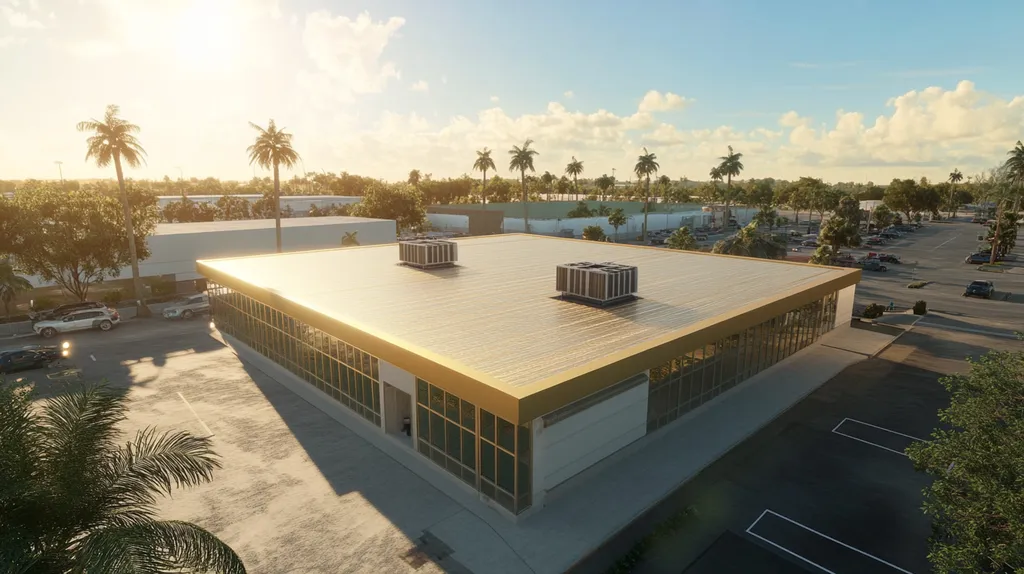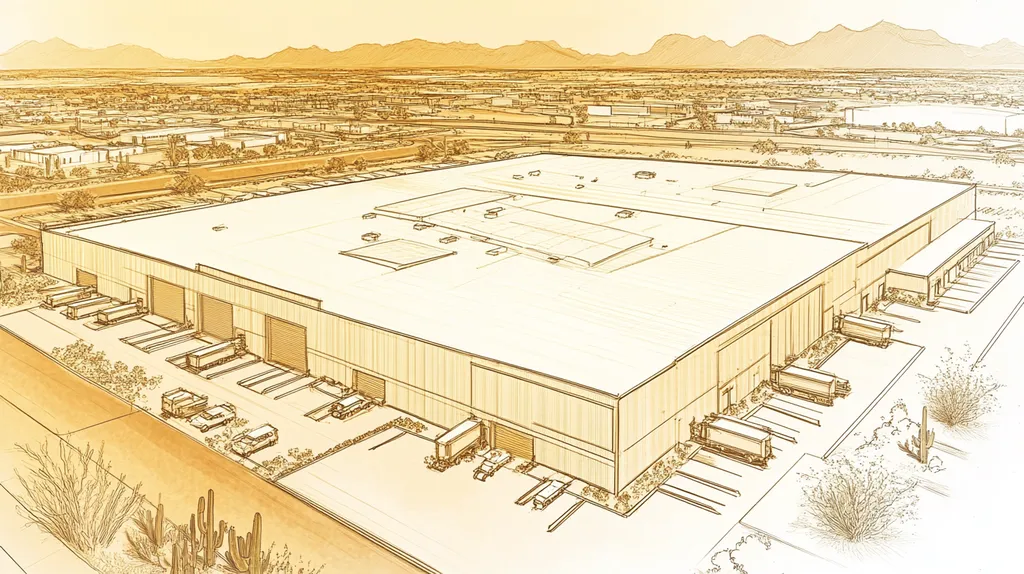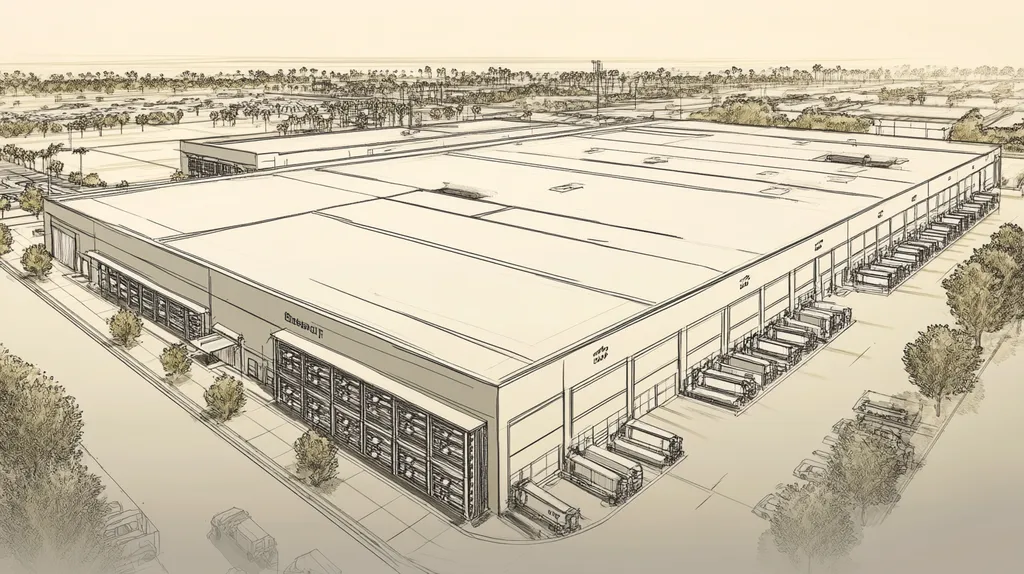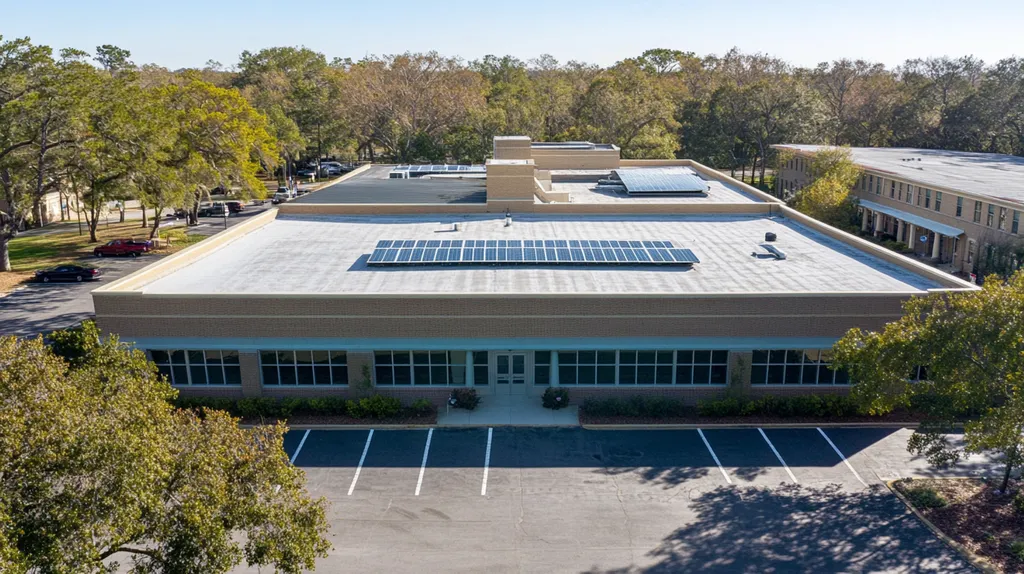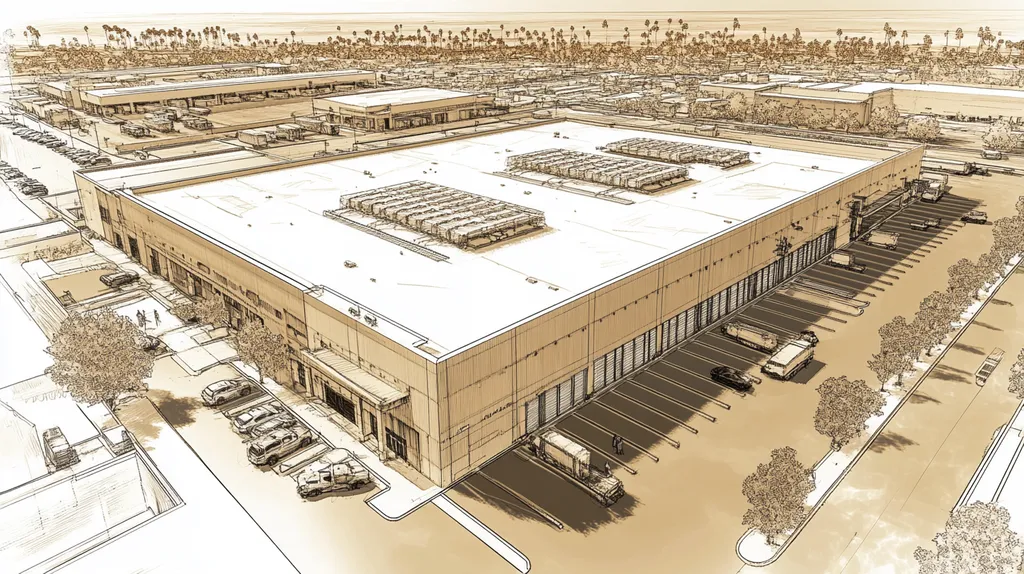In today’s competitive commercial real estate market, smart lighting efficiency isn’t just about saving energy—it’s about survival. With lighting consuming up to 35% of a typical building’s electricity budget, property owners are leaving thousands of dollars on the table through outdated systems.
Recent studies show that optimized smart lighting can slash energy costs by 50-75% while enhancing tenant satisfaction and property values. Yet many buildings continue operating with inefficient lighting infrastructure that bleeds money daily.
This comprehensive guide breaks down the essential factors for maximizing smart lighting performance: from understanding key metrics and financial considerations to navigating compliance requirements and implementing effective operational procedures.
SECTION 1: PERFORMANCE FACTORS
In today’s commercial world, mastering energy management is more essential than ever. With buildings consuming approximately 40% of energy in the U.S.—largely through lighting—property owners have a golden opportunity to cut costs while boosting sustainability. By optimizing smart lighting on rooftops, they can significantly improve both their bottom line and their environmental footprint. This section delves into the vital performance factors for maximizing smart lighting efficiency: natural light optimization, energy efficiency metrics, and smart lighting controls.
Natural Light Optimization
Harnessing natural light is a game-changer for energy savings in commercial spaces. Incorporating elements like skylights and reflective surfaces not only brightens interiors but lessens the need for artificial lighting. Research by the U.S. Department of Energy shows that strategically designed skylights can slash electric lighting costs by an impressive 25% to 50%.
Moreover, roofs crafted to maximize natural light contribute to healthier workspaces. Employees who enjoy more daylight tend to report higher productivity and greater job satisfaction. Adding features such as light wells or clerestory windows ensures that light is evenly distributed, enriching the working environment.
Property owners should also think about installing daylight sensors, which automatically modulate artificial lighting according to natural availability—this means less energy wasted! By combining these strategies, not only do property owners enhance energy efficiency, but they also create spaces that attract top-tier tenants.
Key Action Items
Energy Efficiency Metrics
Understanding and establishing strong energy efficiency metrics is critical for assessing a building’s lighting effectiveness. Key metrics, such as watts per square foot or annual energy consumption, provide valuable insights into energy utilization. By comparing these figures to industry benchmarks, property managers can easily pinpoint areas needing improvement.
Utilizing advanced tools like energy monitoring systems allows real-time tracking and identification of inefficiencies. Armed with data, property owners can see when lighting demand peaks and adjust usage, resulting in potential savings of 10-30%.
Additionally, adopting energy-efficient lighting technologies, such as LED fixtures, aligns seamlessly with these metrics. LEDs not only consume less energy but also last longer, decreasing replacement costs. Setting clear goals linked to specific metrics fosters accountability and paves the way for ongoing improvement.
Key Action Items
Smart Lighting Controls
Smart lighting controls can transform energy management in commercial spaces. Automated systems, like timers and occupancy sensors, drastically cut down on energy waste. For instance, lights that turn off automatically in unoccupied areas can lead to energy savings of up to 40%.
These intelligent systems also allow for remote management, enabling property managers to adjust lighting settings with ease from their smartphones. This adaptability not only promotes better energy management but ensures rapid responses to fluctuating operational demands.
Integrating smart lighting with building management systems takes efficiency to the next level. Data analysis from these interconnected systems identifies usage trends that inform future energy strategies. This connection allows building owners to make informed decisions that lead to remarkable cost savings.
Key Action Items
SECTION 2: FINANCIAL CONSIDERATIONS
As energy costs continue to rise, commercial property owners must pay close attention to the financial aspect of upgrading to smart lighting systems on their roofs. In fact, the U.S. Department of Energy highlights that efficient lighting solutions can cut energy expenses by 50% or even more. This compelling potential for savings emphasizes the need for thoughtful financial planning, including initial investments, long-term benefits, and ongoing maintenance costs. Grasping these factors is essential for making astute decisions that benefit the bottom line.
Initial Investment Costs
The shift towards smart lighting systems often demands a notable upfront investment. Advanced technologies like LEDs, integrated sensors, and smart controls tend to cost more than traditional lighting alternatives.
Despite the initial expense, multiple financial institutions provide incentives and rebates to encourage energy-efficient upgrades. Moreover, property owners could also explore federal and state tax credits that significantly reduce these initial outlays.
It’s crucial to consider installation costs, along with any necessary modifications to the roofing systems. Thorough planning ensures property owners allocate their budgets wisely to accommodate these expenses.
Key Action Items
Long-Term Energy Savings
Investing in smart lighting not only results in upfront costs but pays off with remarkable long-term energy savings. Over their lifespan, these systems can lead to a jaw-dropping 70% reduction in energy consumption.
Smart lighting controls dynamically adjust illumination based on occupancy and time of day, ensuring no energy is wasted. With utility rates on the rise, these savings can provide significant financial relief throughout the years.
For example, a mid-sized warehouse could save tens of thousands annually by making the switch from traditional fixtures to smart LED options. This substantial benefit highlights the importance of factoring in long-term implications when evaluating initial costs.
Additionally, enhanced energy efficiency not only slashes bills but can also increase a property’s market value, making the investment in a robust smart lighting system a savvy move for property appreciation.
Key Action Items
Maintenance and Replacement Costs
Maintenance and replacement costs are pivotal factors to evaluate when considering a lighting system upgrade. Typically, smart lighting systems have longer lifespans compared to traditional options, resulting in less frequent replacements.
For example, LED lighting can last up to 25,000 hours, while conventional bulbs may need changing every 1,000 hours. This longevity can significantly lower both direct costs and associated labor for ongoing maintenance.
However, it’s important to bear in mind that some smart lighting systems may require compatible technology updates or software enhancements, leading to additional future costs. Property owners need to include these variables in their financial strategy.
Additionally, establishing a regular maintenance routine for control systems is essential to maintain efficiency. Proactive maintenance can help prevent unexpected failures, ensuring sustained energy savings and optimal performance.
Key Action Items
SECTION 3: COMPLIANCE REQUIREMENTS
In the fast-paced world of commercial lighting, compliance with energy codes and regulations is non-negotiable. Ignoring these standards could mean hefty fines and lost opportunities for energy savings. Studies reveal that facilities meeting updated lighting efficiency norms can enjoy energy bill reductions averaging 30%, demonstrating the tangible benefits of compliance.
Energy Codes and Regulations
Energy codes establish the minimum efficiency benchmarks for lighting in commercial settings. Prominent codes like ASHRAE Standard 90.1 and the International Energy Conservation Code (IECC) play a crucial role in shaping lighting system requirements and their efficiency parameters.
Non-compliance can lead to significant financial penalties, which can adversely affect a business’s profitability. Recent updates highlight the need for adaptive smart lighting systems, which adjust to occupancy and natural daylight, ensuring both energy efficiency and improved performance.
Regularly reviewing lighting installations is vital for staying compliant with evolving codes. Collaboration with informed contractors can simplify navigation through these regulations, ensuring installations not only meet but exceed necessary standards.
Key Action Items
Sustainability Standards
Sustainability standards are pivotal in guiding energy-efficient lighting practices across commercial buildings. Organizations, such as LEED (Leadership in Energy and Environmental Design), provide frameworks for sustainable practices that can profoundly boost a property’s market value.
These standards advocate for smart lighting technologies that cut down on energy waste by adjusting levels based on occupancy. For instance, occupancy sensors can significantly reduce energy usage by turning off lights in vacant areas.
Incorporating these sustainable solutions into compliance strategies not only aligns with regulations but also enhances occupants’ comfort and productivity, leading to happier tenants. Embracing environmentally-friendly lighting designs can also open doors to attractive financial incentives.
Key Action Items
Certification and Accreditation
Certification and accreditation offer valuable advantages for commercial property owners aiming to incorporate smart lighting solutions. Credentials like Energy Star affirm that a building meets stringent energy efficiency criteria established by the EPA.
Buildings granted Energy Star certification not only achieve remarkable energy savings, but they also enhance property appeal to prospective tenants. Recognized certifications build credibility and contribute to effective marketing and leasing strategies.
Moreover, pursuing these certifications usually requires adherence to best lighting design practices, yielding innovative solutions for even greater energy efficiency. Staying updated on relevant certification programs helps property managers maximize compliance benefits while bolstering sustainability and profitability.
Key Action Items
SECTION 4: RISK MANAGEMENT
As commercial buildings embrace smart lighting systems, savvy risk management becomes essential. System failures can result in unanticipated costs and pose serious safety issues. Additionally, lighting systems may introduce security vulnerabilities and environmental challenges that demand careful planning.
System Failure and Downtime
When smart lighting systems go awry, the impacts can reverberate throughout a property. Unexpected downtime can slow operations and even inflate energy costs. In fact, research indicates that unplanned outages can cost companies an average of $1.5 million annually.
To combat this, ensuring proper installation and regular maintenance is key. A proactive maintenance schedule is essential to keep lighting systems running smoothly and efficiently.
Advanced monitoring technologies can significantly reduce risks by identifying problems early on. These smart systems can notify facility managers of any irregularities, allowing for timely interventions before minor issues escalate into major headaches.
Establishing backup lighting options is also wise; even if the primary system fails, essential areas can remain illuminated with energy-efficient solutions.
Key Action Items
Safety and Security Concerns
Smart lighting systems not only enhance energy efficiency but are pivotal to safety and security as well. Poorly lit areas could lead to accidents, while insufficient security lighting may invite criminal activity.
According to the National Safety Council, improved lighting can reduce accidents in workspaces by up to 30%. An effective lighting approach stipulates both proper visibility and the agility to adjust to changing conditions using smart technology.
Smart lighting can dynamically alter brightness based on occupancy and available daylight. This flexibility not only enhances safety but also fosters sustainable energy practices within a building.
Engaging with security professionals can enhance lighting layouts tailored for safety. Collaborating on security assessments helps ensure maximum coverage of vulnerable areas through smart lighting.
Key Action Items
Environmental Impact Mitigation
While smart lighting systems offer ways to lessen a building’s environmental impact, mismanagement can lead to excessive energy consumption and unwanted light pollution.
Starting with energy-efficient bulbs and fixtures is essential. LED lights, for example, can drastically reduce energy use—often by as much as 75% over traditional options.
Integrating occupancy sensors further curtails waste by ensuring lights dim or turn off when spaces are not in use. This proactive strategy can substantially enhance energy conservation.
Additionally, it’s vital to address light pollution in urban areas. Smart lighting designs should focus illumination where it’s necessary, protecting local wildlife and preserving community aesthetics.
Key Action Items
SECTION 5: OPERATIONAL PROCEDURES
Implementing smart lighting systems on commercial roofs introduces operational challenges that demand careful planning and strategic execution. The stakes are high; inefficient lighting can inflate energy costs by 30% or more. To fully unlock the benefits of smart lighting, property owners and facility managers must prioritize the installation process, ensure seamless daily operation, and commit to routine maintenance.
Installation and Integration
Effective installation of smart lighting systems is crucial for maximizing energy efficiency. Begin with an energy audit to evaluate current lighting and energy use, establishing a baseline that highlights improvement opportunities.
Another key component is successful integration with existing building management systems, such as HVAC and security. This interconnected approach ensures optimized energy usage across diverse operations within the facility.
Engaging qualified contractors familiar with smart technology installations is essential. Quality installation minimizes future maintenance requirements and enhances overall system performance. Additionally, incorporating advanced sensors allows for adaptive lighting adjustments based on occupancy and natural light levels.
Key Action Items
Daily Operation and Monitoring
Daily operations of smart lighting should include diligent monitoring of energy consumption and system performance metrics. This practice enables property managers to quickly spot irregularities and areas for enhancement.
Leveraging software dashboards can streamline this process, providing real-time insights into lighting utilization and efficiency. Recommended best practices involve setting automated schedules that align lighting with occupancy patterns.
Adjusting lighting settings based on collected data can lead to substantial energy savings. For example, reducing illumination during off-peak hours or dimming lights in response to available daylight improves overall energy efficiency. Regularly reviewing performance data informs operational decisions.
Key Action Items
Routine Maintenance and Upgrades
Consistent maintenance of smart lighting systems is vital for long-term efficiency and reliability. Scheduling regular inspections should be incorporated into operational practices, covering software updates and assessments of lighting components like bulbs and sensors.
Prioritize replacing outdated equipment, as technology evolves rapidly, leading to significant savings from modern upgrades. Property owners should routinely evaluate their systems to identify and implement advancements.
Documenting maintenance activities is essential for tracking and forecasting, as well as supporting warranty claims if issues arise. Finally, coordinating with lighting technology vendors can provide ongoing support and training, helping managers stay informed about emerging solutions.
Key Action Items
SECTION 5: OPERATIONAL PROCEDURES
Implementing smart lighting systems on commercial roofs introduces operational challenges that require strategic planning and careful execution. The potential consequences are significant; inefficient lighting can inflate energy costs by an alarming 30% or more. To fully capitalize on the advantages of smart lighting, property owners and facility managers must focus on installation, daily operation, and consistent maintenance practices.
Installation and Integration
Successful installation of smart lighting systems is vital for optimizing energy efficiency. Start with an energy audit to gauge current lighting and energy consumption, establishing a baseline for possible improvements.
Integration with existing building systems is equally important. Smart lighting must connect smoothly with other technologies, such as HVAC and security systems, to ensure efficient energy usage across the board.
Hiring skilled contractors who specialize in smart installations can dramatically impact future maintenance needs and overall system performance. Incorporating advanced sensors provides adaptive lighting, adjusting to occupancy and natural light levels for heightened efficiency.
Training staff on the new system’s features during installation is crucial. Familiarity with the technology maximizes its operational benefits, ensuring everyone can leverage smart lighting effectively.
Key Action Items
Daily Operation and Monitoring
Daily operations of smart lighting should involve vigilant monitoring of energy consumption and performance metrics. This practice enables property managers to quickly identify irregularities and optimize system usage.
Employing software dashboards can streamline this process, offering real-time insights into lighting effectiveness. Best practices include setting automated schedules that align with occupancy patterns and energy needs.
Regular adjustments based on performance data can lead to significant energy savings. For instance, dimming lights during off-peak hours or utilizing daylight can greatly enhance overall efficiency. Periodic reviews of gathered data will inform smarter operational choices.
Encouraging staff accountability around energy-saving practices is vital. Conducting training sessions on system capabilities can keep everyone engaged and performance-focused.
Key Action Items
Routine Maintenance and Upgrades
Regular maintenance of smart lighting systems is essential for sustained efficiency and reliability. Incorporating scheduled inspections into operational protocols is vital, including checks for software updates and physical component assessments.
Prioritizing the replacement of outdated equipment is crucial, as technology evolves quickly and modern upgrades can yield significant energy savings. Consistent reevaluation of systems can reveal opportunities for enhancements.
Thorough documentation of maintenance activities plays a key role in planning and forecasting, as well as supporting warranty claims if issues arise. Collaboration with technology vendors can ensure continuous support and access to training for property managers.
Key Action Items
Looking Ahead
Smart lighting optimization represents a pivotal opportunity that commercial property owners can’t afford to ignore, with potential energy savings of 50-75% hanging in the balance.
As energy costs continue climbing and sustainability regulations tighten, buildings without efficient lighting systems risk becoming financially and operationally obsolete.
The data is clear: properties implementing comprehensive smart lighting strategies see dramatic reductions in operating costs while enhancing tenant satisfaction and property values.
By following this actionable roadmap – from performance optimization and financial planning to compliance and risk management – facility managers can transform their rooftop lighting from an energy liability into a competitive advantage.
The future of commercial real estate belongs to those who embrace these innovations today.
FREQUENTLY ASKED QUESTIONS
Q. How can I maximize my commercial roof’s natural light?
A. Strategic designs like skylights and reflective surfaces can optimize daylight on your roof. Incorporating features such as light wells or clerestory windows further enhances the distribution of natural light, reducing the need for artificial sources and boosting overall energy efficiency.
Q. What financial incentives are available for industrial roof lighting systems?
A. Many financial institutions offer rebates and incentives for upgrading to energy-efficient lighting systems. Additionally, property owners can explore federal and state tax credits, which can significantly ease the initial investment burdens, making the switch a savvy financial move.
Q. How do energy codes impact my commercial roof lighting?
A. Energy codes set minimum efficiency standards for commercial lighting systems. Compliance ensures you avoid hefty penalties while potentially enjoying energy bill reductions. Regularly reviewing your lighting installations keeps your systems current with evolving regulations, ensuring maximum savings and efficiency.
Q. What risks should I consider with smart lighting systems?
A. Smart lighting systems can pose risks like unexpected outages, safety concerns, or security vulnerabilities. Implementing a proactive maintenance schedule and monitoring technologies can mitigate these risks, while backup options ensure that critical areas maintain illumination during failures.
Q. How can I ensure effective daily operation of my lighting system?
A. Diligent monitoring of energy consumption and system performance is key. Utilize software dashboards for real-time insights and set automated schedules that align with occupancy patterns to optimize lighting usage and reduce energy waste.
Q. What are common maintenance tips for smart lighting systems?
A. Schedule regular inspections to ensure all components are functional, including checking for software updates. Replace outdated equipment promptly and keep detailed records of maintenance activities to support efficiency and warranty claims.
Q. How can I improve the comfort level in my commercial roof space?
A. Enhancing daylighting through strategic placement of windows and skylights increases comfort for occupants. Additionally, integrating smart lighting controls helps adjust brightness based on availability, creating a more pleasant work environment and improving productivity.

